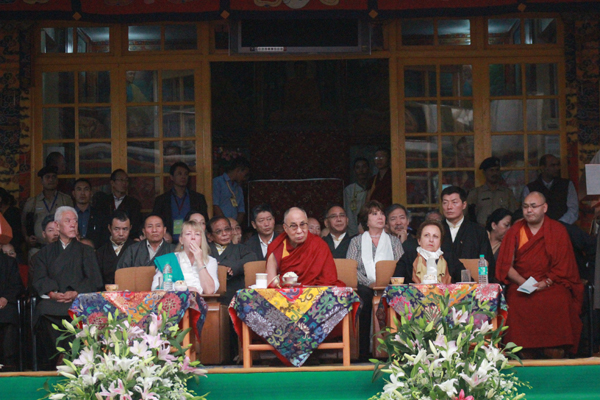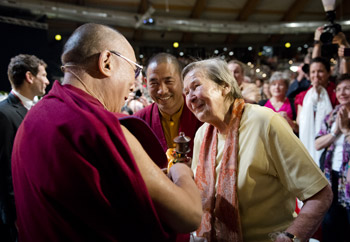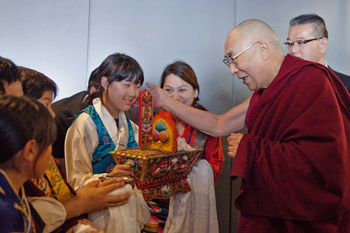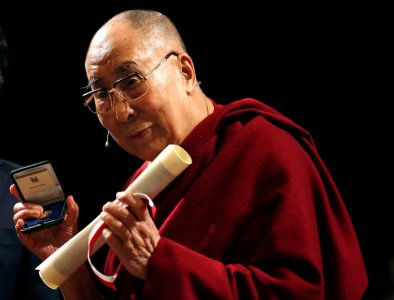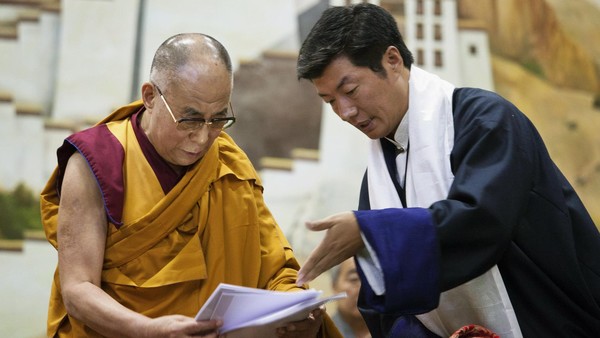From Tibet to Taiwan, China’s Periphery Watches Hong Kong Protests Intently
Andrew Jacobs, The New York Times | Beijing, October 5, 2014
As hundreds of protesters continue to occupy the streets of Hong Kong, challenging China’s Communist Party leaders with calls for greater democracy, much of the world anxiously awaits signs of how Beijing will react to their demands.
But the anticipation is perhaps most keenly felt along the periphery of China’s far-flung territory, both inside the country and beyond, where the Chinese government’s authoritarian ways have been most apparent.
Among Tibetans and Uighurs, beleaguered ethnic minorities in China’s far west, there is hope that the protests will draw international scrutiny to what they say are Beijing’s broken promises for greater autonomy.
The central government’s refusal to even talk with pro-democracy advocates in Hong Kong, exiled activists add, also highlights a longstanding complaint among many ethnic minority groups in China: the party’s reliance on force over dialogue when dealing with politically delicate matters.
“We’ve seen this movie before, but when people stand up to the Chinese government in places like Lhasa or Urumqi and meet brutal resistance, there is no foreign media to show the world what’s happening,” said Nury Turkel, a Uighur-American lawyer and activist, referring to the regional capitals of Tibet and Xinjiang. “The difference here is what’s happening in Hong Kong is taking place in real time, for all the world to see.”
Few places are watching the protests as closely as Taiwan, the self-governed island that China claims as part of its territory.
Beijing’s refusal to grant Hong Kong the unfettered elections that were promised when the former British colony was returned to Chinese sovereignty in 1997 — a move that prompted the protests — has sharpened opposition to President Ma Ying-jeou of Taiwan and his efforts to forge closer economic ties with the mainland.
The concept of “one country, two systems,” the political arrangement that has given Hong Kong a raft of liberties unknown on the mainland, was first envisioned as a framework for forging reunification between Taiwan and China. Although relations have improved in recent years, the two sides have never signed a peace accord, and Beijing maintains the option of taking Taiwan by force.
“As we closely follow events in Hong Kong, we have this feeling that in the not-so-distant future, we could very well end up like Hong Kong,” said Titus Chen, a professor at National Sun Yat-sen University in Taiwan, noting what he and others describe as China’s growing influence on the island. “Today it’s Hong Kong; tomorrow it might be Taiwan.”
No matter how the impasse is resolved, the struggle unfolding in Hong Kong is already a public-relations nightmare for Beijing. Outside China, the scenes of peaceful student protesters sprayed with tear gas and bloodied by thugs have elicited unwelcome comparisons to the 1989 pro-democracydemonstrations in Tiananmen Square, which ended in violence when the Chinese military moved to crush the protests, earning Beijing years of international opprobrium.
The drama in Hong Kong, playing out in real time on social media and beamed across the world by the international news media, also threatens to complicate Beijing’s ambitious efforts to burnish its image abroad.
In recent days, rallies in Singapore, Seoul, Manila and elsewhere have drawn thousands of people expressing solidarity with the demonstrators in Hong Kong.
John Delury, a professor of East Asian studies at Yonsei University in South Korea, said his students, many of them from across Asia, have been riveted by the events in Hong Kong.
“I think the impact on young people across Asia could be much bigger than what Beijing anticipates,” he said, noting Hong Kong’s role as regional purveyor of popular culture and a center for international finance. “From a soft-power perspective, if anything remotely like what happened in 1989 occurs in Hong Kong, China can kiss its soft power goodbye for a couple of decades.”
The political tumult in Hong Kong has become a headache for Beijing at a time when party leaders are grappling with a host of challenges, from a slowing economy to diplomatic skirmishes with neighbors like Japan,Vietnam and the Philippines. Then there is mounting unrest in Xinjiang, in China’s far northwest, as well as the simmering discontent in Tibetan areas that has prompted more than 130 people to set themselves on fire to protest government policies.
Advocates for Tibetans and Uighurs have been especially active on social media, drawing parallels between Hong Kong and the autonomous regions that Beijing established for the nation’s largest ethnic minorities more than six decades ago.
“What we have in common with the people in Hong Kong is that we are all fighting for freedom and justice against an authoritarian regime that has broken its promises again and again,” Tenzin Jigdal, a Tibetan activist, said in a phone interview from Dharamsala, India, home to the Tibetan government in exile.
Those promises include constitutional guarantees that ethnic minorities would have a significant role in managing their own affairs, much as Hong Kong does. In reality, the sprawling autonomous regions set up for Tibetans, Uighurs, Mongolians and other groups are run by ethnic Han Chinese officials appointed by the central government. Most experts outside China agree such entities are autonomous in name only.
Although Hong Kong residents still enjoy an uncensored Internet, an independent judiciary and a relatively unfettered press, their complaints echo those that Tibetans and Uighurs have been making for years: about growing interference from Beijing and increasing economic disparity fueled by a surge in wealthier migrants from the mainland.
Most analysts agree that events in Hong Kong have already done significant damage to one of China’s so-called core interests: its six-decade effort to bring about reunification with Taiwan.
That effort has already run into mounting resistance among the island’s 23 million residents, crystallized last spring when student activists occupied Taiwan’s legislature for nearly a month to protest a trade bill with China. Opponents said the measure, backed by Mr. Ma and his legislative allies from the governing Kuomintang, would have given Beijing too much influence over Taiwan’s economy, which is increasingly dependent on the mainland.
The protests, known as the Sunflower Movement, succeeded in halting the bill, providing inspiration to the young activists who have led the pro-democracy effort in Hong Kong.
In a move that stunned many people in Taiwan, the Chinese president, Xi Jinping, last month reaffirmed Beijing’s determination to pursue “one country, two systems” for Taiwan. Given events in Hong Kong, the announcement was seen as poorly timed and prompted a rebuke from President Ma, who has been struggling to ease widespread mistrust of Beijing among Taiwan’s electorate.
Jiho Chang, a leader of the Sunflower Movement, said the combination of Mr. Xi’s remarks and the refusal to give Hong Kong residents the right to elect their leader freely had finally put to rest the notion that Taiwan and Beijing might one day come together under the rubric of “one country, two systems.”
In a phone interview, Mr. Chang laughed when asked if “one country, two systems” still had any resonance among people in Taiwan.
“I’m very confident China would break its promises on anything,” he said. “China claims it wants to bring us closer together, but given what we’ve seen happening in Hong Kong, it has only succeeded in pushing us further apart.”

